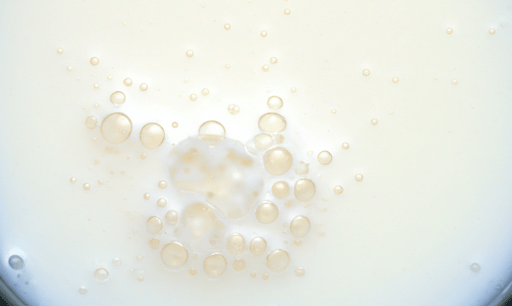Nanobubbles for Preservation of Milk and Beverages
DAIRY & ALTERNATIVES SUSTAINABILITYBEVERAGES


The food and beverage industry faces a persistent challenge: the limited shelf life of perishable liquids like milk, yogurt, and juices. Despite advances such as pasteurization and microfiltration, spoilage remains a costly issue. These liquids are highly susceptible to microbial growth and oxidation, even under stringent refrigeration. For example, pasteurized milk typically lasts 12-14 days, but its organoleptic properties, such as taste and texture, can degrade over time. Additionally, spoilage can stem from oxygen exposure, leading to off-flavors and reduced quality. This short shelf life creates economic burdens for producers and retailers, increasing waste and logistical costs.
Traditional methods to address these issues have limitations. Pasteurization, while effective at reducing microbial load, often alters the natural taste of products. The industry standard has been to minimize oxygen exposure, as it is widely regarded as a catalyst for spoilage. However, these approaches come with significant trade-offs in cost, product quality, and energy consumption. The need for a transformative solution has never been more urgent, particularly as consumer demand for fresh, high-quality products continues to rise.
To tackle this, the North American gas company Messer has filed a patent application on nanobubble technology—an approach that offers a practical and cost-effective solution to extend the shelf life of perishable liquids. Unlike conventional practices that avoid oxygen, this method uses nanobubbles of oxygen to combat both oxidative and microbial spoilage. These nanobubbles, each measuring between 1 and 500 nanometers in size, remain suspended in liquids for weeks, offering unique benefits that address the core problems associated with perishable liquids.
Nanobubbles interact with the liquid environment in ways that larger bubbles cannot. They can scavenge dissolved gases like oxygen, preventing unwanted oxidation that causes off-flavors and discoloration. In addition, nanobubbles cluster near microbial flora, altering their behavior and inhibiting growth. This dual action effectively slows down spoilage while preserving the natural taste, texture, and nutritional properties of products. As a result, nanobubble technology provides an alternative to pasteurization without its associated drawbacks.
In the comparison study mentioned in the patent, it was found that milk treated with oxygen nanobubbles showed significant delay in spoilage compared to untreated samples. While the control milk showed signs of spoilage (detected through a sour odor) as early as day 13, the nanobubble-treated milk remained free of spoilage signs until day 23—10 days longer than the untreated samples.
This approach provides a clear advantage: extending the shelf life of milk and other perishable liquids without resorting to traditional methods that may alter the product's taste and texture. The nanobubble treatment allows producers to delay spoilage for a longer period, reducing waste and increasing economic efficiency. Furthermore, the use of oxygen, a Generally Regarded as Safe (GRAS) substance, ensures that the milk product remains compliant with safety regulations, eliminating the need for labeling changes.
The versatility of Messer's technology extends beyond dairy. It can be applied to a wide range of liquids, including fruit juices, vegetable purees, flavored water, and even non-food products like latex paint and cosmetics. By infusing these liquids with carefully selected gas mixtures, producers can tailor the process to suit specific product needs.
This innovative approach also has far-reaching economic and environmental implications. By extending shelf life, Messer's technology reduces waste and lowers costs for producers and retailers. Additionally, it minimizes reliance on energy-intensive refrigeration systems, contributing to a smaller carbon footprint. For an industry grappling with sustainability goals, this dual benefit of quality preservation and environmental efficiency is a game-changer.
